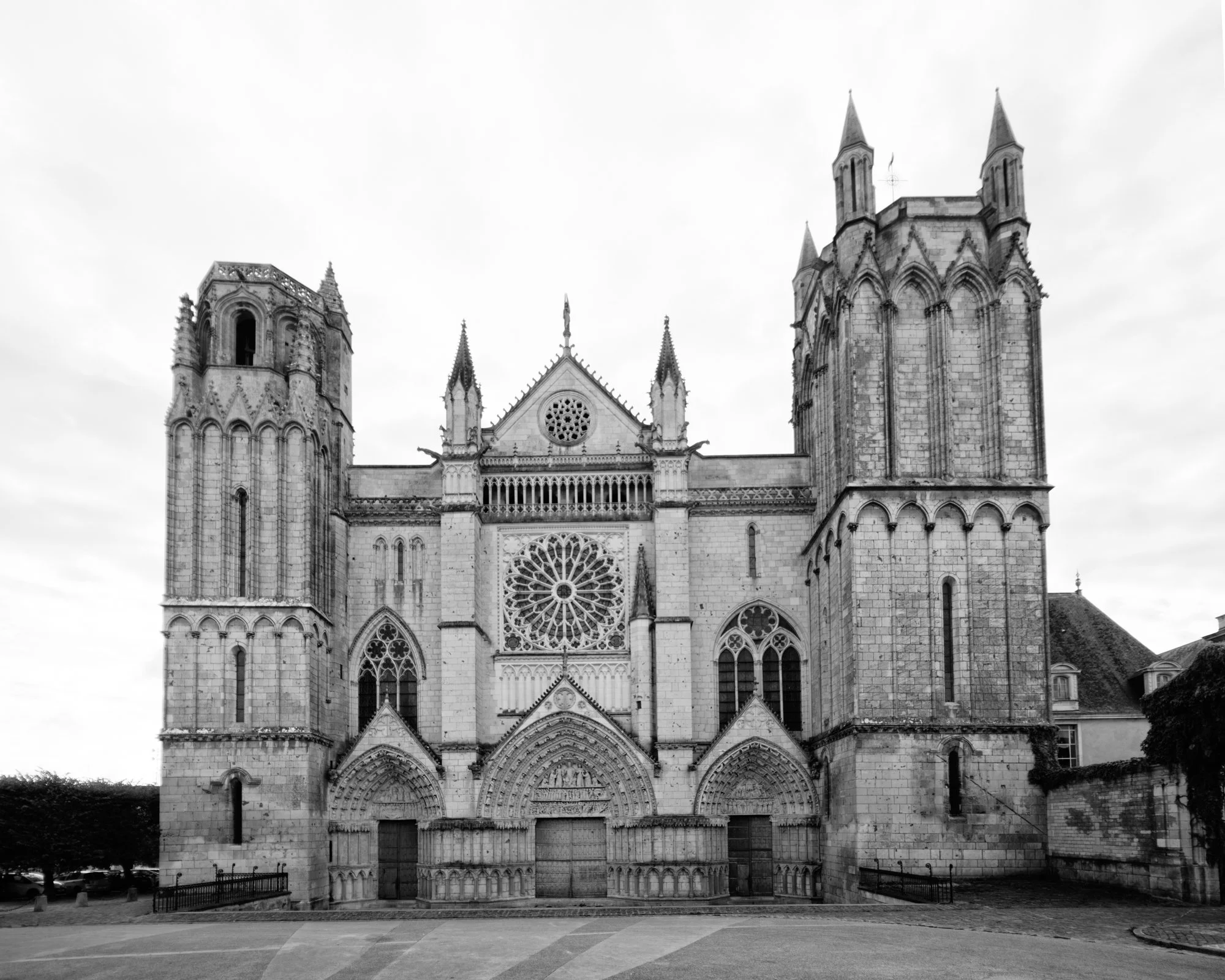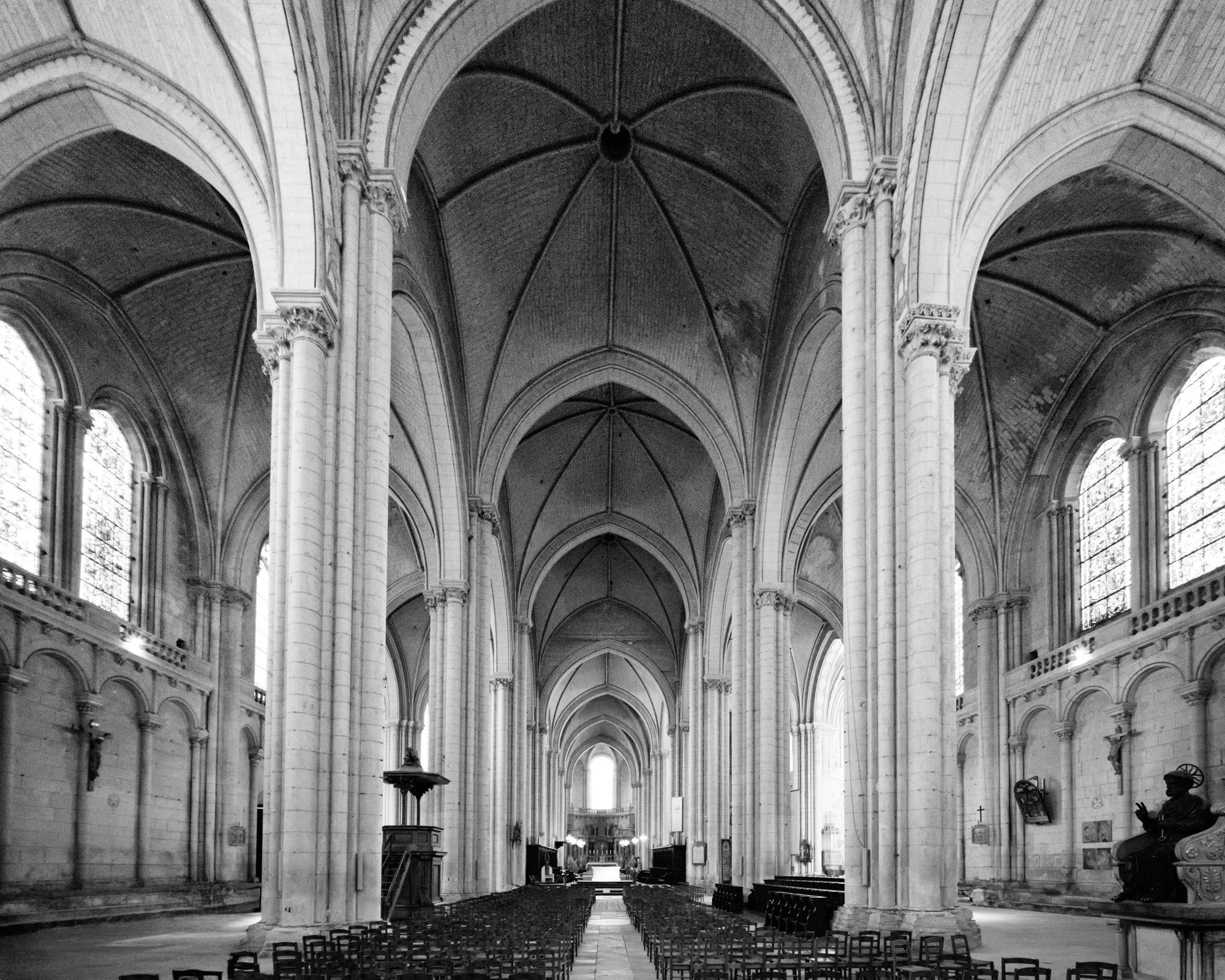The Cathédrale Saint-Pierre of Poitiers.
In the historic heart of Poitiers, where Roman roads once crossed and medieval kings held court, rises one of France’s most striking Gothic churches: the Cathédrale Saint-Pierre. Begun around 1162 under the patronage of Eleanor of Aquitaine and Henry II of England, it reflects a turning point in architecture. Instead of the soaring spires of northern cathedrals, Poitiers offers a wide, hall-like interior—three nearly equal naves supported by massive clustered columns.
Step inside and you feel the difference immediately. The space is broad and luminous, more like an immense hall than a vertical climb toward heaven. Light spills through an exceptional set of 12th- and 13th-century stained-glass windows, among the oldest and best preserved in France. One masterpiece shows the Crucifixion flanked by detailed scenes from the lives of saints, its blues and ruby reds still glowing after eight centuries.
Music once filled this stone volume as richly as color does. The great organ, with pipes dating to the 18th century and a case adorned with delicate carvings, is among the finest in western France. Beneath it, carved choir stalls from the late Gothic period—intricate scenes of foliage, animals, and everyday life—give a surprisingly earthy counterpoint to the cathedral’s solemnity.
The building also tells of power and politics. Its foundation coincided with the Angevin empire of Henry II and Eleanor, whose marriage linked England and much of western France. Later centuries added chapels, sculptures, and restorations, but the core remains a proud witness to that rich medieval moment.
The interior of the Cathédrale Saint-Pierre



